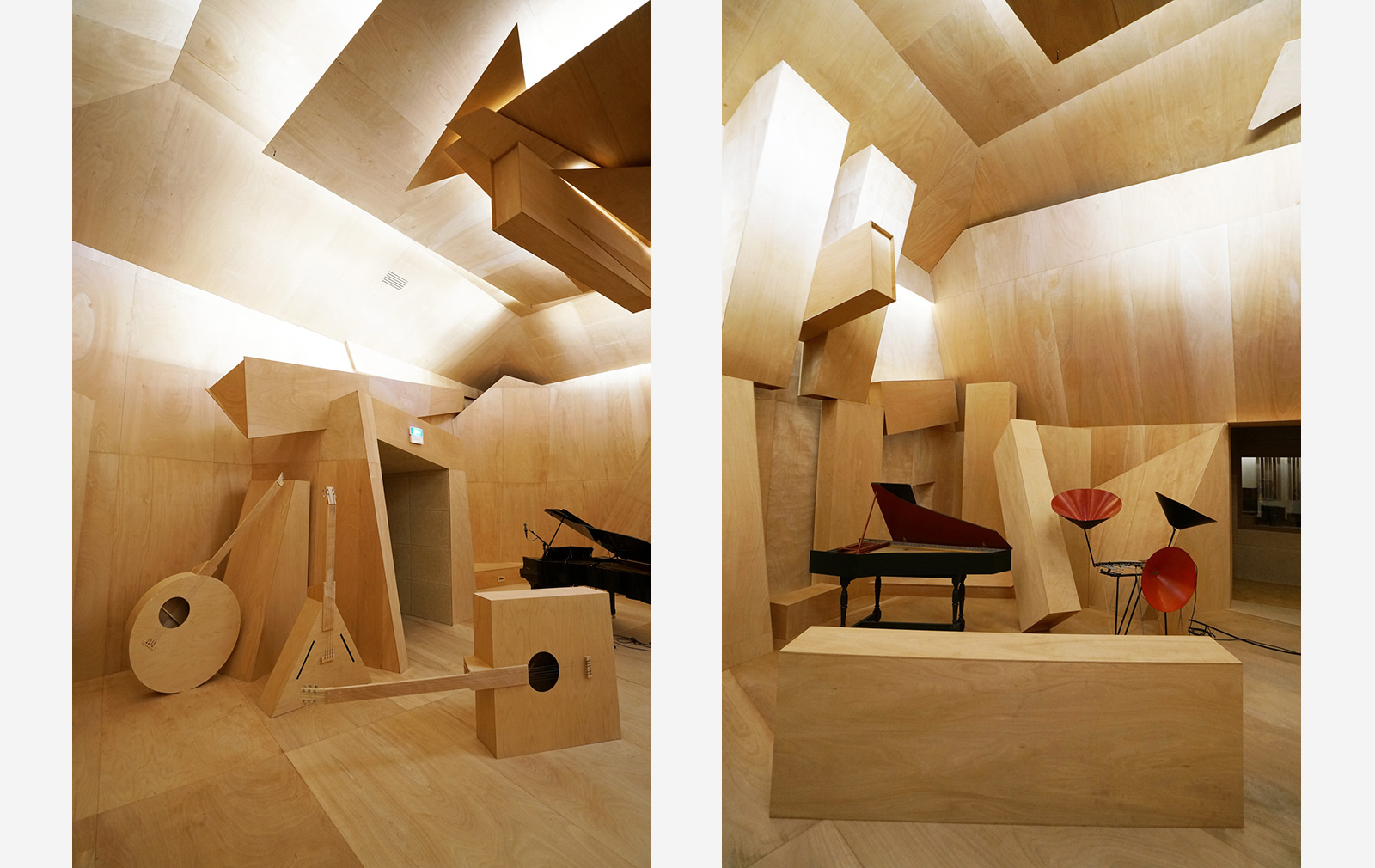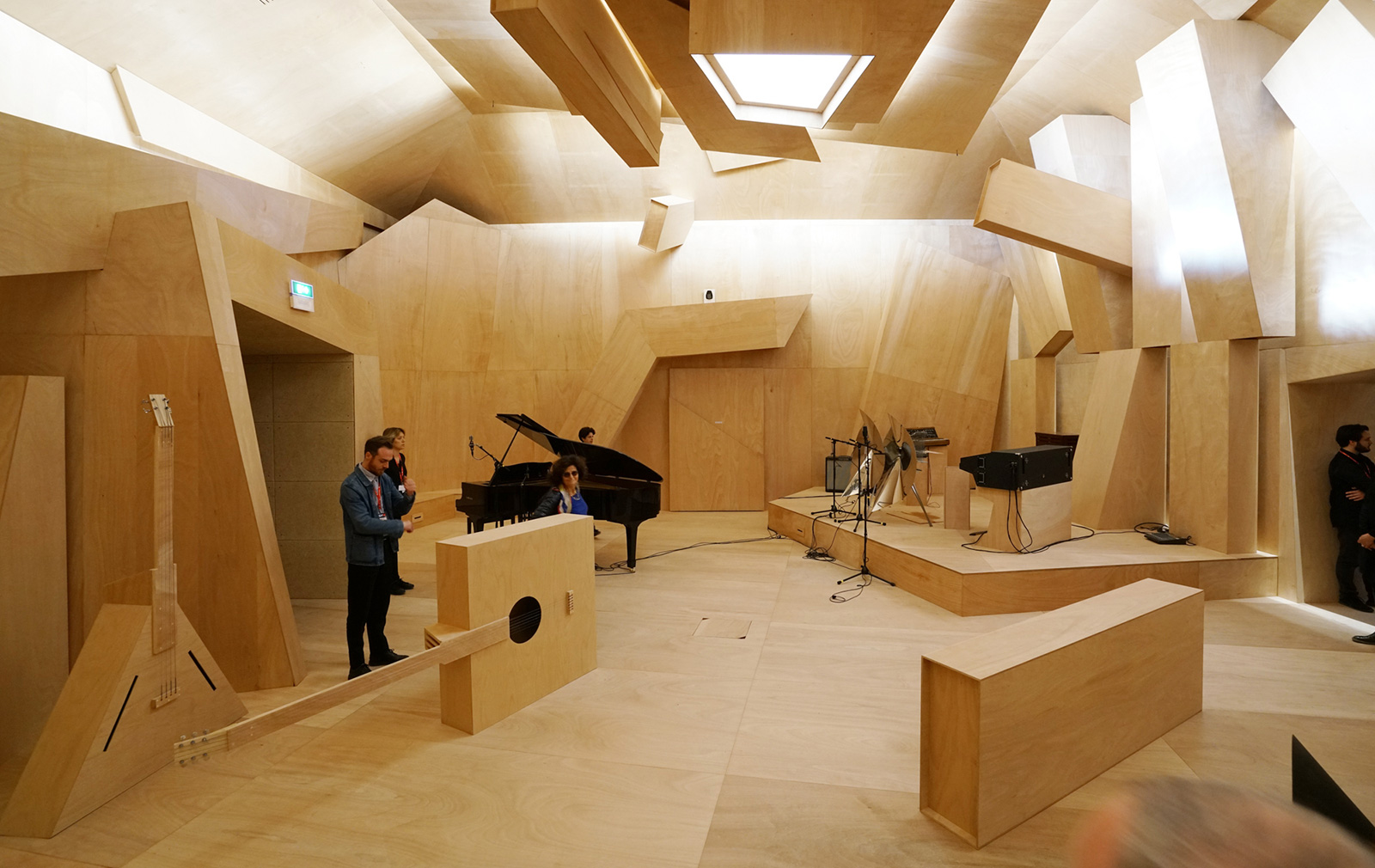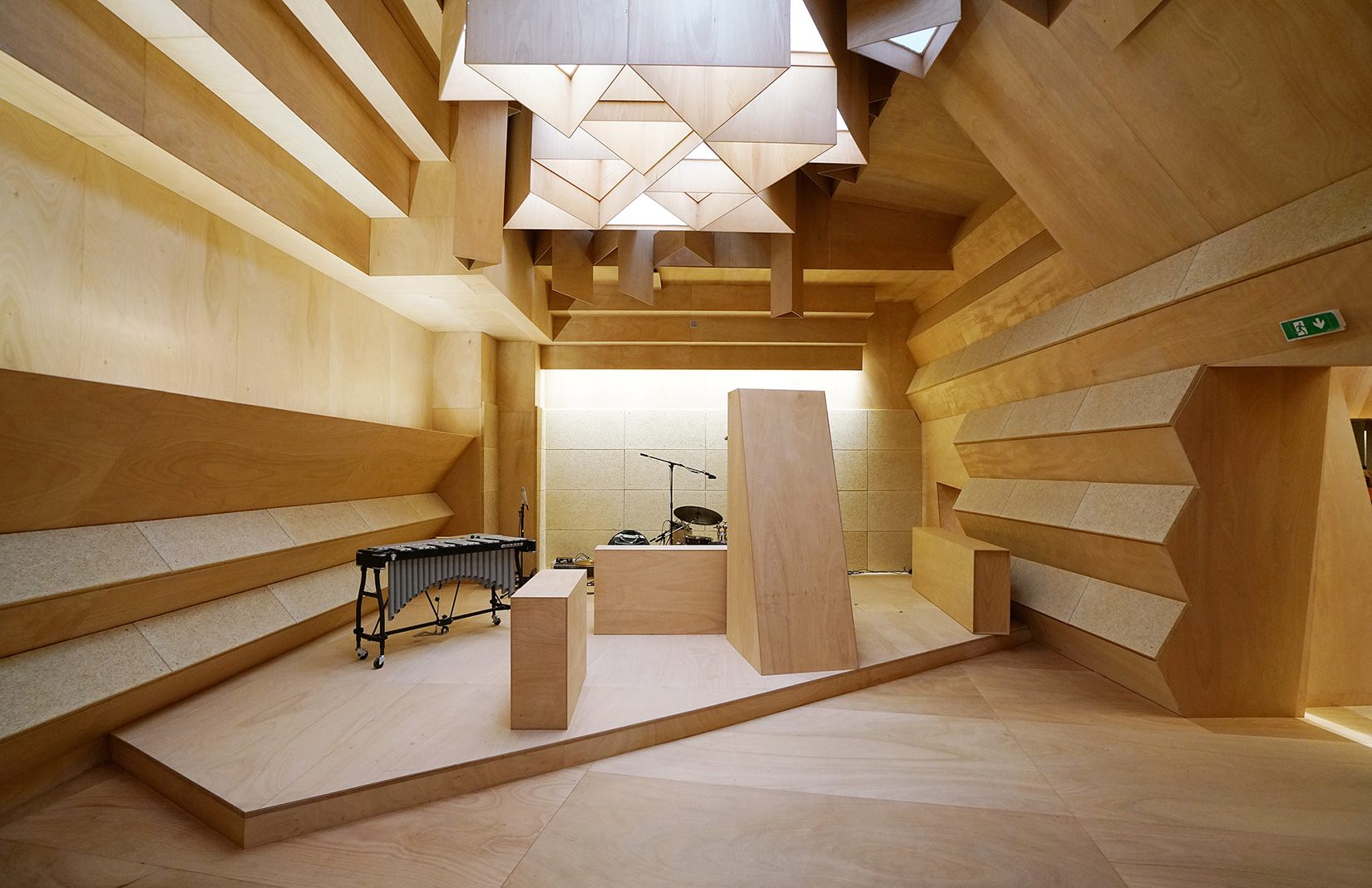Artist Xavier Veilhan has transformed the 1912 French Pavilion into a giant sound sculpture for the Venice Biennale.
The building’s columned exterior – designed by Venetian engineer Fausto Finzi in the Giardini della Biennale – remains untouched, but Veilhan has created a faceted interior landscape of wood and fabric. He has teamed up with curators Christian Marclay and Lionel Bovier to invite musicians and artists from around the world to play in the recording studio for the duration of the Biennale.

‘The pavilion merges visual arts and music, with a nod not only to Bauhaus and the experiments of Black Mountain College but also Doug Aitken’s Station to Station,’ says the artist, known for his sculptural Architectones interventions in famous Modernist buildings.
Like Aitken’s project, Studio Venezia will be a collaborative stage for artists over the 173 working days of the Venice Biennale. Lists of musicians will only be partially unveiled in advance so that it can remain a place for experimentation – a place where the public can encounter secret moments and unplanned happenings.

Veilhan has incorporated numerous instruments into the design, allowing artists from different genres (from classical to electronic and from new music compositions to folkloric styles) to work on site.
Beneath the installation’s plywood and rockwool walls are hidden acoustic devices to trap the sound and ‘give it shine’, as the artist puts it. Veilhan also visual took cues for the design from artist Kurt Schwitters’ grotto-like Merzbau in Hannover, which was destroyed by the war.

After Studio Venezia closes, the project will be rechristened Studio Buenos Aires for a sojourn in the Argentinian capital’s CCK centre in June 2018 and Studio Lisboa, when it arrives at Lisbon’s MAAT the following autumn.
See more spectacles not to miss at the Venice Biennale.
View the world’s best designed recording studios.























